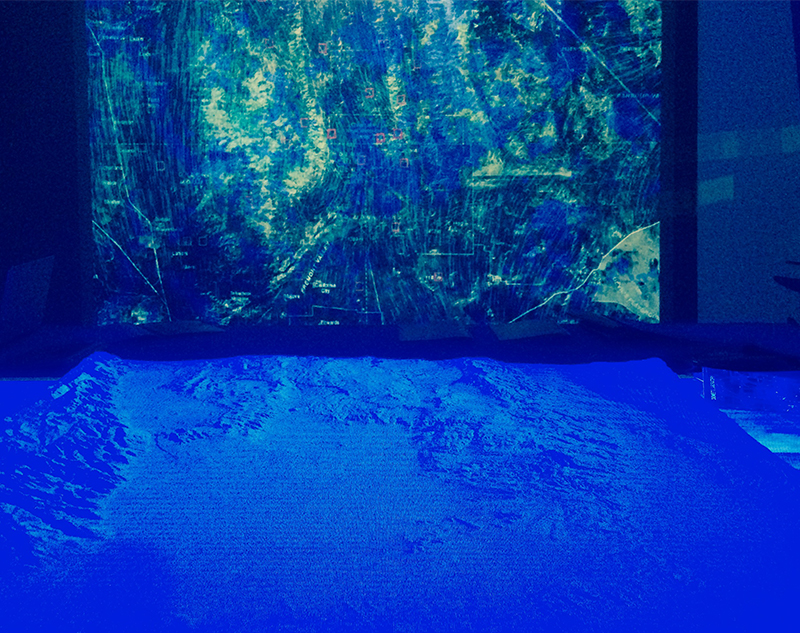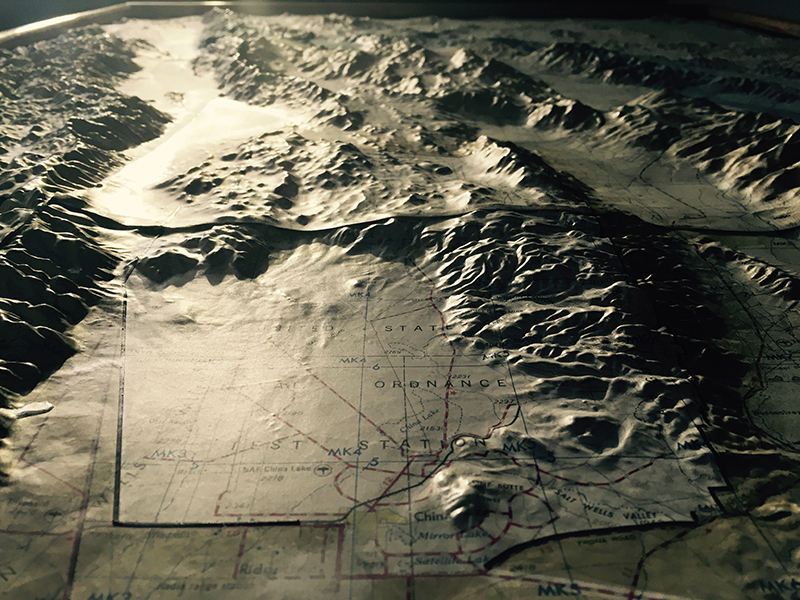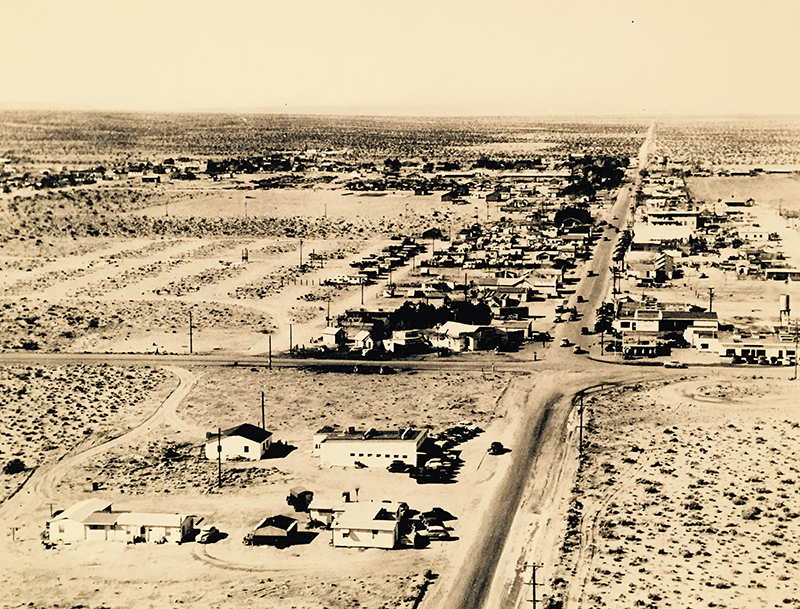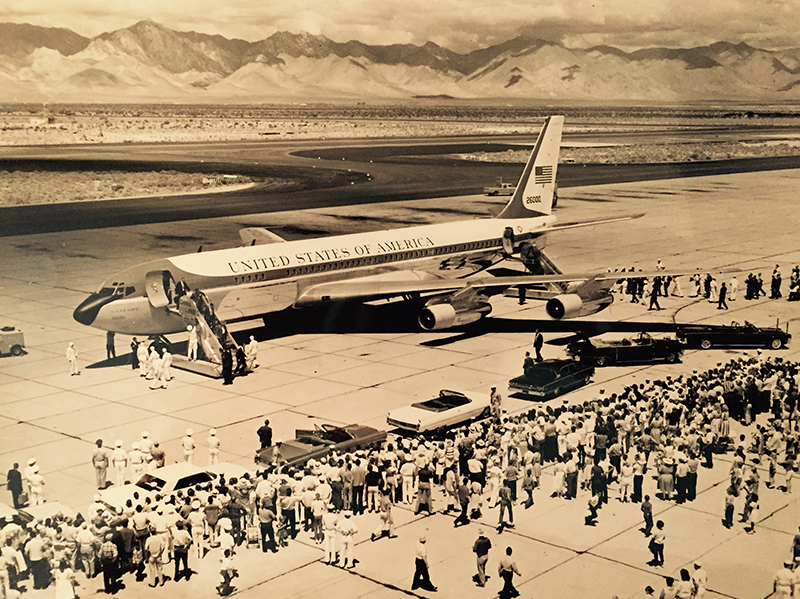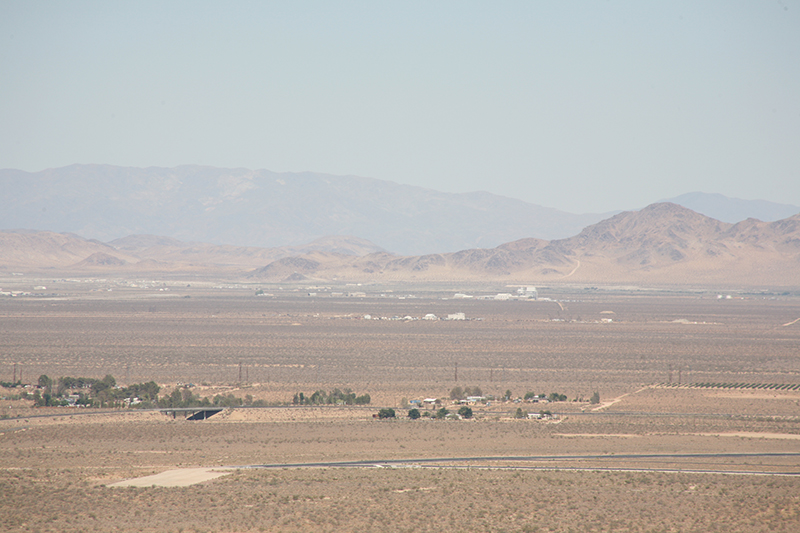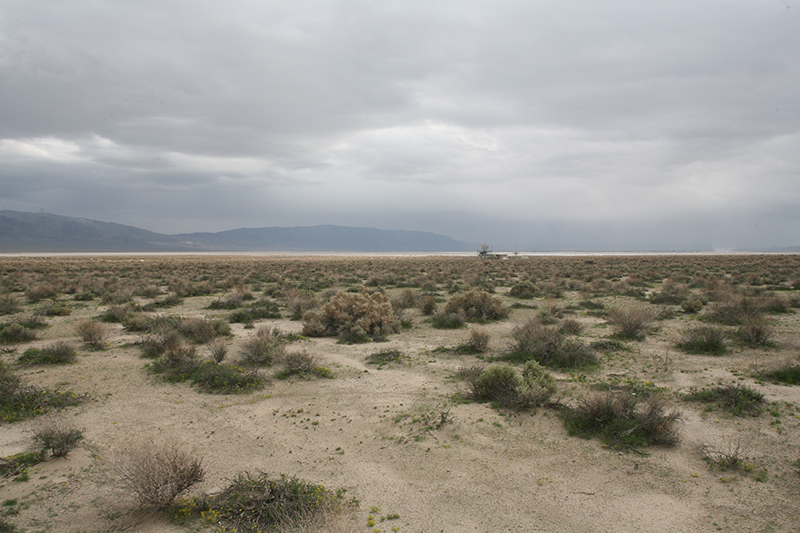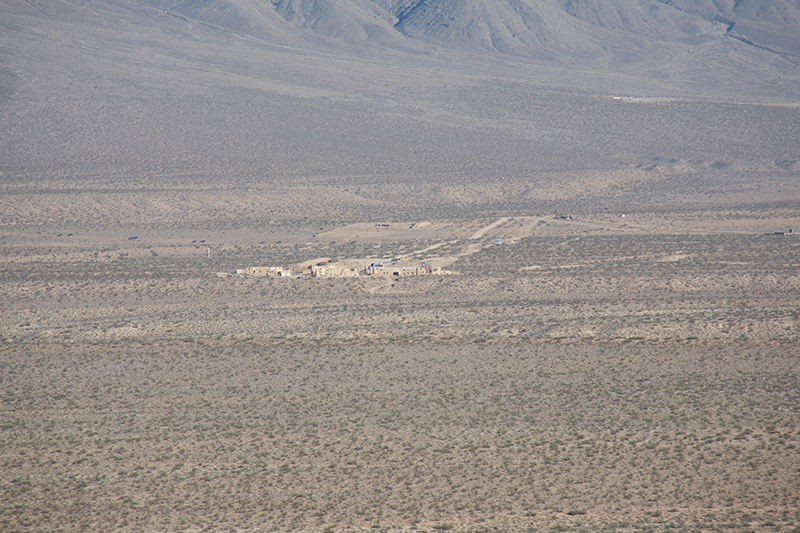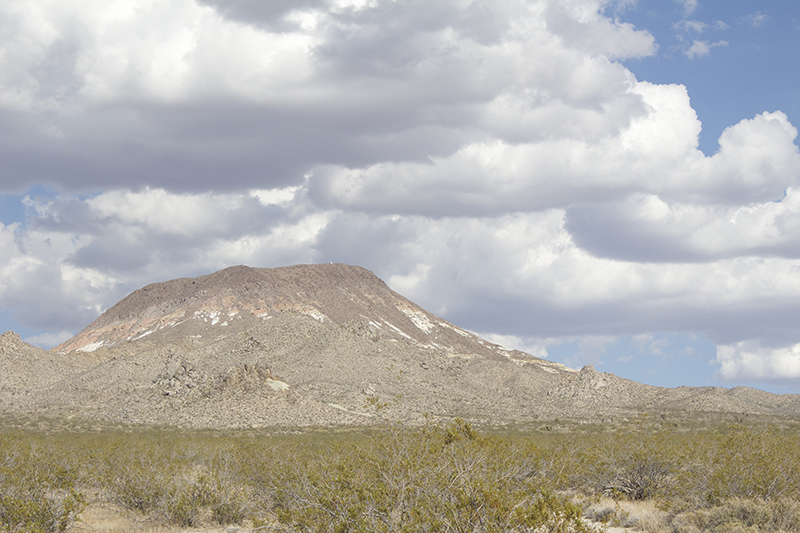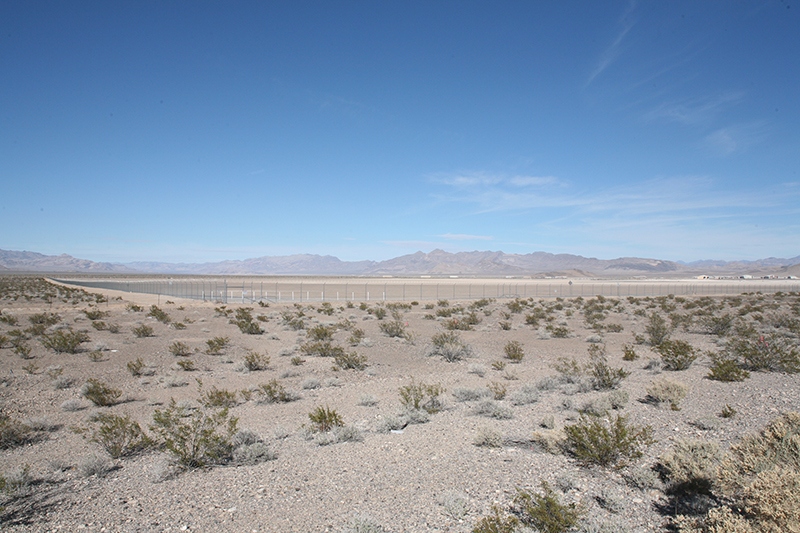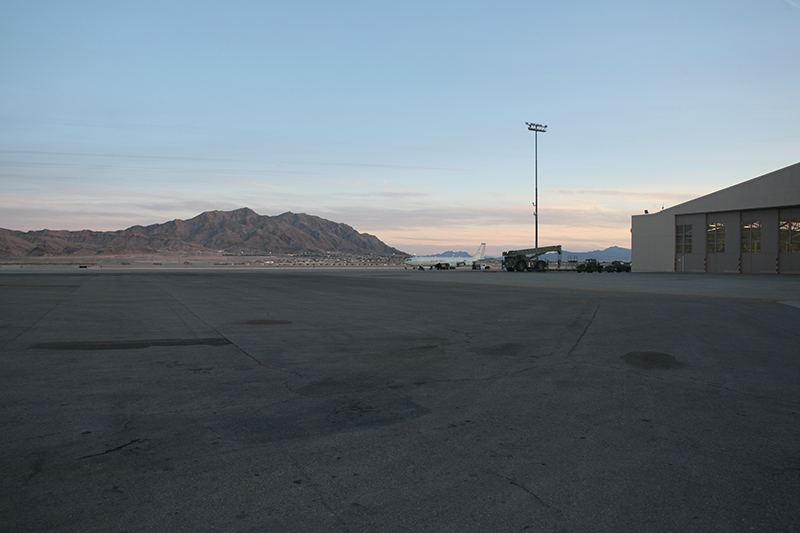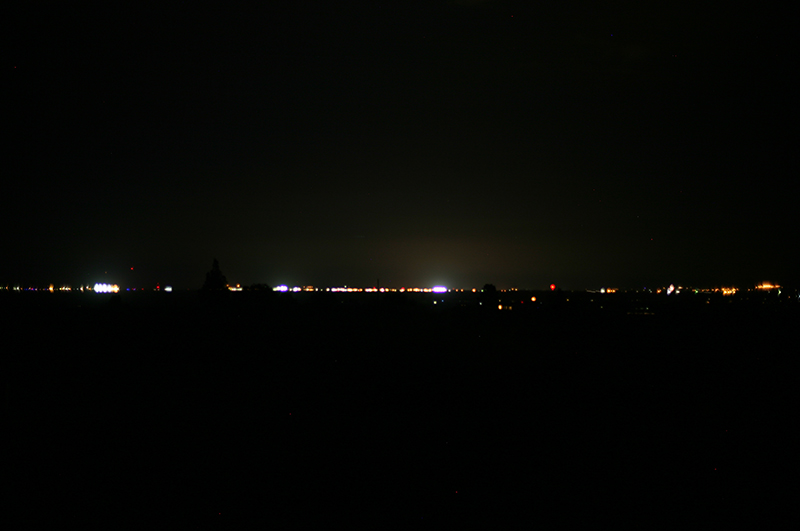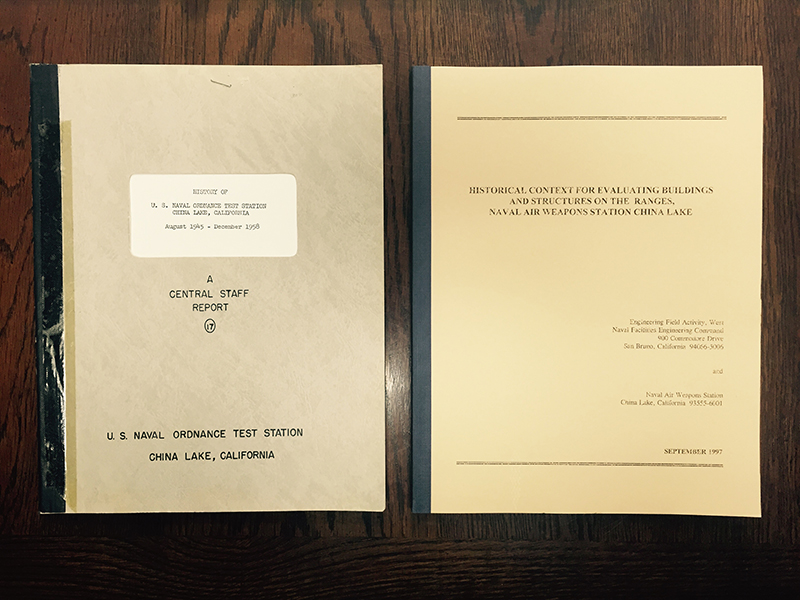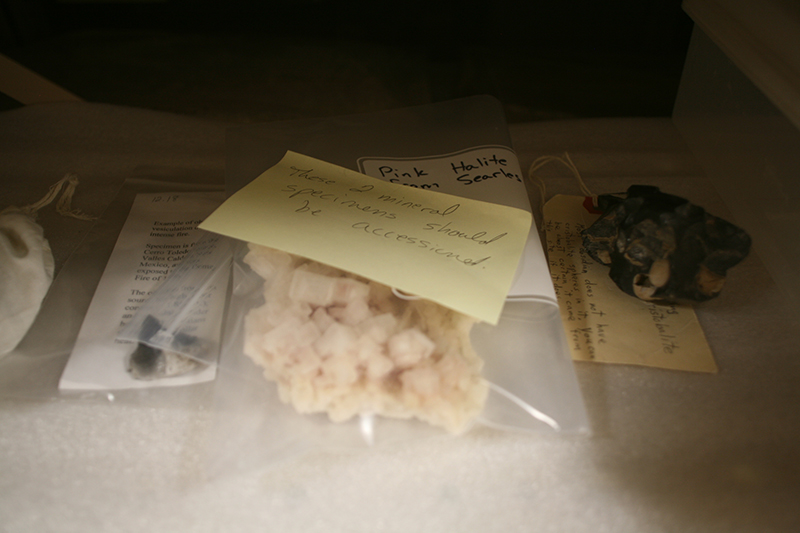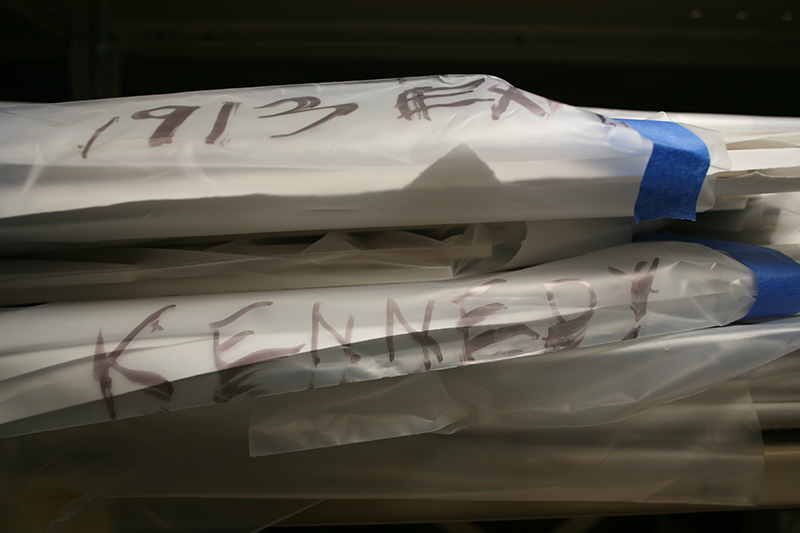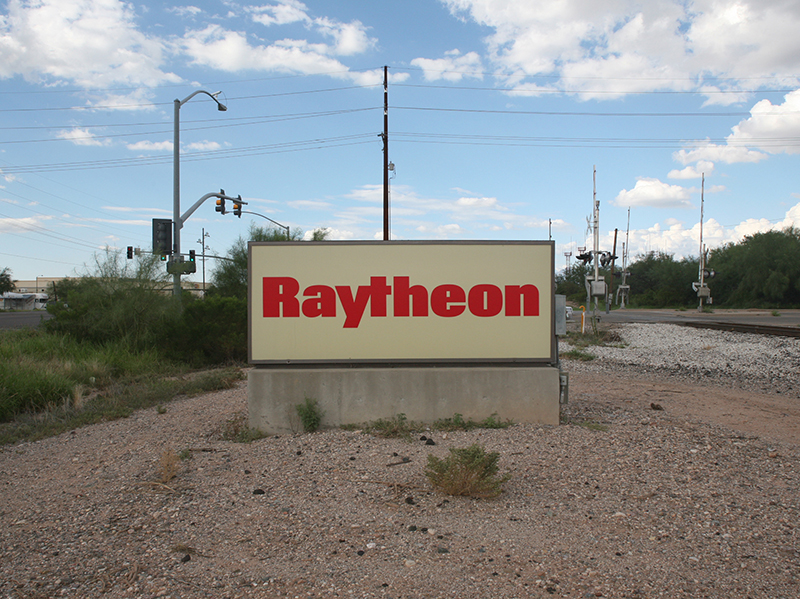Proving Grounds: California
A premiere account of a spatial military/civilian merger in the American South-West
2015
China Lake, US
- Text by Markus Miessen & Marcos Sanchez
A project by Markus Miessen & Marcos Sanchez
Research Base: University of Southern California, Los Angeles
Seen from the foothills of the Sierra Nevada Mountains, the China Lake Naval Ordnance Test Station disappears into an indistinct haze, its vast desert lakebed blurred by heat waves and bounded by a seemingly endless security fence. In military planning maps prepared during the Second World War, the base comes into greater focus: a network of test ranges and remote laboratories safeguarded by expanses of desert, where California Institute of Technology (Cal Tech) scientists and engineers, working in tandem with military personnel, were to carry out weapons research.
The base’s land allocation originated in 1943 as part of the Second World War’s federal reorganization of the Southwestern desert land and airspace into a network of technical research and weapons design facilities. Located in the Western Mojave Desert on the border between California and Nevada, lands previously home to the Native American Coso tribe, China Lake is accompanied by its comparatively miniscule civilian counterpart, the town of Ridgecrest, California.
Constructed between the Sequoia and Death Valley National Parks (established 1890 and 1933, respectively), China Lake’s plein-air test ranges would famously become a key development facility for the Manhattan Project, housing atmospheric research and final logistics teams working toward the Hiroshima and Nagasaki atomic attacks. In Post War decades, it would develop into a curious combination of experimental space and military urbanism. Supported by decades of project funding, the base would participate in a vast array of aerospace and weapons programs, including NACA (later NASA) research, Sidewinder, Tomahawk and Hellfire missile systems, radar, jamming controls, unmanned aircraft and urban targeting simulations. China Lake would provide testing grounds for long term projects with military industry giants Raytheon, United Technologies, L-3 Communications, Northrop Grumman, Lockheed Martin and General Dynamics, among many others.
In the context of this investigation, however, the development of individual weapons systems is secondary to the base’s long-term managerial practice, designed by Vannevar Bush, electrical engineer, military administrator and initiator of the Manhattan Project. His “Principles of Operation” for China Lake would attempt to integrate military administration and resource with civilian-run research; the spatial order resulting from this experimental and logistical practice would subdivide the base, which now controls airspace over an area four times the size of Los Angeles County.
In this exemplary setting, the products of research are “proven” at the base but would also depend on field refinements during the Cold War, and afterward, throughout the country’s various global armed conflicts. Compared to other wartime scientific efforts such as the reverse engineering of Germany’s Enigma machine, much research and development at China Lake may be understood as propositional programs that are initiated at the base but which are completed in distant and future conflicts.
Indeed, at China Lake weapons development was both institutionalized and urbanized; decades of research programs were staffed by residents of a military-designed town for civilians. Because drawing researchers to the remote desert site proved a challenge, base planners attempted to compensate for the isolated and punishing environment by constructing amenities for families that would accompany civilian workers. The resulting town would gather the country’s highest density of citizens with doctoral degrees. At present, civilians continue to comprise ninety percent of China Lake’s workforce.
The transient nature of fixed-duration military research projects resulted in a periodic cycling of military personnel, producing a curious archival side effect: with researchers and military contractors departing after completing programs, maintaining an institutional record of base life proved difficult. Interestingly, however, the occasional researcher and family would remain in Ridgecrest, opting for a life of air-conditioned domesticity in the California desert.
The base’s secure town was evacuated and mostly razed in 1999, resulting in a novel security problem: the boundary between military China Lake and civilian Ridgecrest, a border between federal land and civilian property, would be exposed to heavy traffic as part of the base’s daily life. The checkpoints that continue to modulate this border crossing are part of a larger narrative of conflict, one that involves overlapping territories and constituencies: military researcher and civilian scientist, base and city, administrative personnel and maintenance staff, U.S. citizens and the Native American population.
At present, the base still ascribes to a modified version of Bush’s Principles; China Lake’s wartime mission held that the complex civilian and military joining of expertise and spaces would produce deployable assets whose development was inconceivable in military and civilian research arenas alone. After some sixty years in operation, the offspring of this curious marriage has been a collection of architectural test spaces, including model factories for weapons assembly, a network of laboratories, test facilities and aircraft infrastructures, and a patchwork of test beds, dotted with decades-old hangars and assembly facilities. The small buildings that housed the Hiroshima weapon still stand, their decay arrested by a combination of desert heat and their recent designation on the National Register of Historic Places.
In this environment, spatial distribution is understood as an engine of experimentation, producing an arena for military invention. The resulting architectural “machines” have generated a test bed based on a utilitarian architecture. At times following a logic familiar to architectural functionalism, China Lake translates program into space, understanding a “building” as a space of precise performance. The change of programs in older buildings and support infrastructure has resulted in numerous modifications, in which the original performance of buildings and test ranges are edited and updated to follow new research requirements.
Constructed as a result of a wartime alliance between the military and private industry, architecture and spatial design provide the framework for imagining the disposition of authority, structure experimental and administrative practices. Traces of past projects and the international conflicts that formed their context of development and ultimate proving ground.
Through archival research and interviews, this project attempts to examine this fascinating manifestation of post war urbanism and architectural testing space. China Lake presents a unique opportunity to encounter the operational, administrative, and ethical difficulties of trans-disciplinary research and design. Our project aims to unearth the political and social variables that have generated particular and localized spatial practices both in the China Lake base lands and in the adjoining town of Ridgecrest.
We have attempted to understand China Lake and its formal and informal protocols to both comment (critically) and act (propose and design) accordingly. Through this investigation we demonstrate how policy can and does work as a design tool on both an architectural and urban scale. Rather than being interested in the university as a vocational training ground that simply passes on technical skills matched with aesthetic competence, we are proposing to redefine the university as an apparatus of genuine investigation – one that matters and produces social, political, and spatial consequence.
